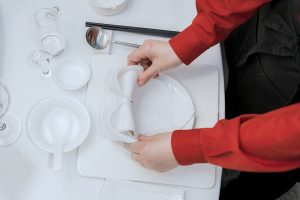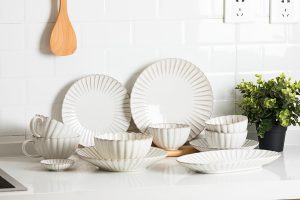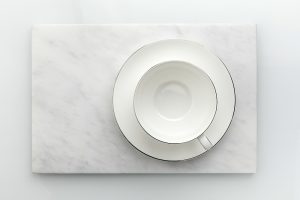
Mastering the Art of Flatware Usage: Tips and Techniques for a Refined Dining Experience
The way you use your flatware, from forks and knives to spoons, can make a significant difference in how you enjoy your meals and present yourself at the table. Proper flatware etiquette not only enhances the dining experience but also reflects your level of refinement and respect for the occasion. In this comprehensive guide, we’ll explore the essential tips and techniques for mastering the art of flatware usage, empowering you to dine with confidence and elegance.
Identifying Flatware Pieces and Their Functions
The first step in using flatware effectively is understanding the different utensils and their designated purposes. Typically, a formal place setting includes a dinner fork, salad fork, dinner knife, soup spoon, and teaspoon. Each piece has a specific role to play in the sequence of a multi-course meal. Familiarize yourself with the placement and use of these utensils to ensure a smooth and seamless dining experience.
Proper Handling Techniques
The way you hold and handle your flatware can vastly improve your table manners. Start by gripping the utensil with your thumb and forefinger, resting the handle in the palm of your hand. Avoid clenching the utensil too tightly or using your entire fist. Keep your elbows close to your body and your movements small and controlled. This elegant posture not only looks refined but also allows for greater dexterity and precision when eating.
Navigating the Dinner Table
As you progress through your meal, it’s important to use the appropriate utensils in the correct order. Begin with the outermost fork and knife for the first course, then work your way inward as new dishes are served. When you’re finished with a course, place your utensils in the “resting” position on your plate, with the tines facing down and the handles pointing to the right.
Cutting and Eating Techniques
When it comes to cutting food, hold your knife and fork in a balanced, parallel position, with the knife blade facing inward. Apply gentle pressure and use a sawing motion to neatly divide your food. As you eat, keep your utensils close to your plate, avoiding large, sweeping movements that can be disruptive to the table.
Proper Placement and Etiquette
Mastering the art of flatware usage also involves understanding proper placement and etiquette. When you’re not using your utensils, rest them on the edge of your plate or in the “resting” position. Avoid placing them directly on the table, as this can be seen as untidy. Additionally, be mindful of your table manners, such as not reaching across the table, chewing with your mouth closed, and avoiding making excessive noise with your utensils.
By incorporating these tips and techniques into your dining habits, you’ll not only elevate your overall dining experience but also demonstrate a level of sophistication and respect for the occasion. Embrace the art of flatware usage, and let it be a reflection of your refined and graceful presence at the table.




